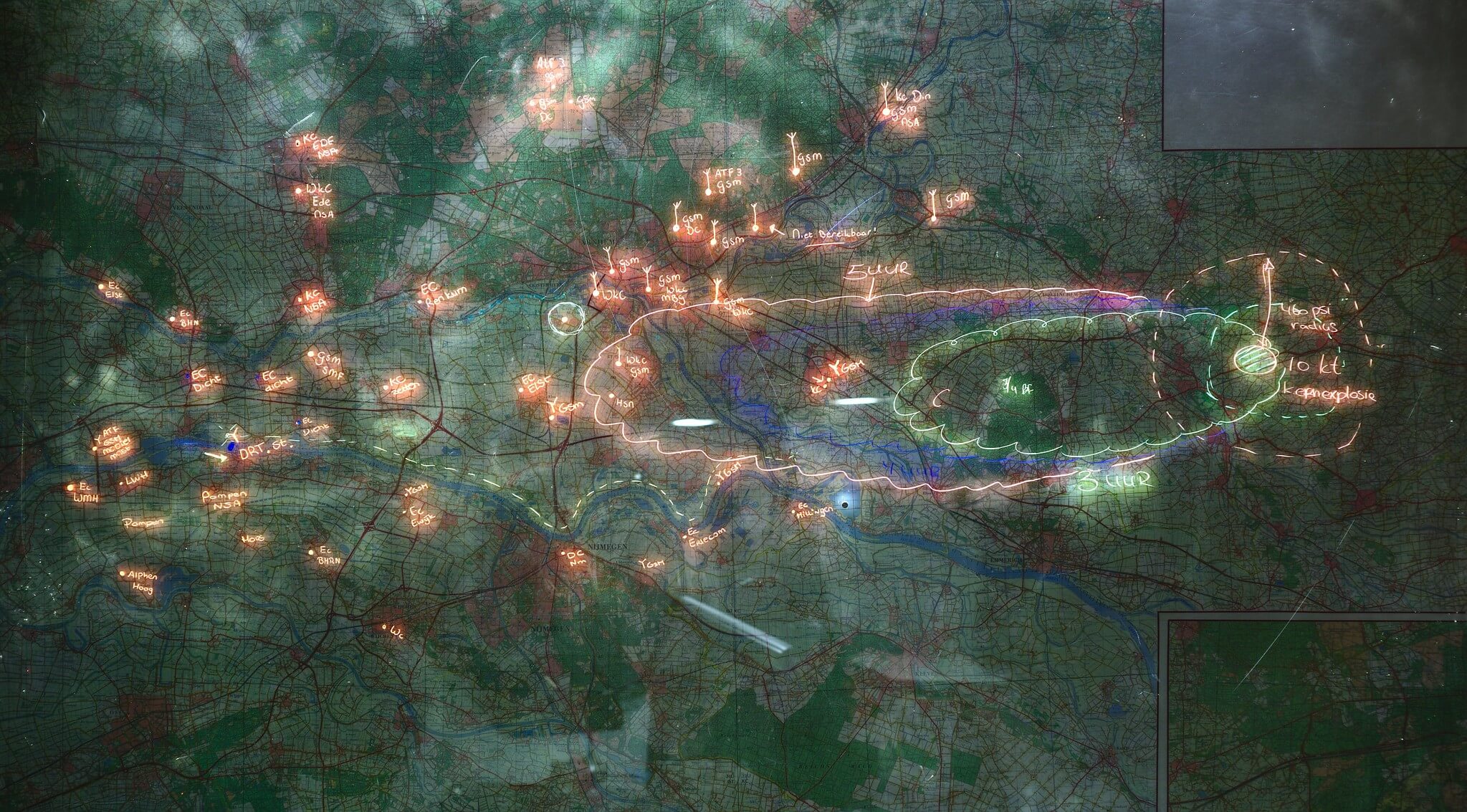Cover image courtesy of Dennis van Zuijlekom. The map depicts the outcome of a 10 kiloton nuclear explosion near Arnheim.
Nuclear disarmament has fallen off the public agenda. Media attention is sporadic and reactive, focusing on short-term trends like summits with North Korea or sanctions on Iran. But the longer-term process of global disarmament rarely features in the news cycle and where there is reference it is treated with disdain as unrealistic. This has serious costs to public engagement and democratic accountability.
This report offers a short accessible history of the nuclear disarmament regime over the last quarter century to help contextualise the events of the present day. Drawing on the expertise of 25 disarmament experts and officials, it reviews the key successes and failures in the regime in this period, offers some recommendations and lessons learned, and proposes a narrative framing to talk about these events as a whole.
In an expert community dominated by competing opinions and sometimes intimidating detail, the purpose is to provide a clear and balanced overview of the disarmament regime for media professionals who are new the field, to facilitate reporting with a long-term view and reinvigorate public interest in disarmament.
- Successes in nuclear disarmament since the Cold War tend to (i) reflect the continued implementation of agreements made in the 1990s rather than new disarmament agreements, or (ii) are the result of agreements among NNWS that excluded or lacked buy-in from the NWS, such as NWFZs or the TPNW, or (iii) were steps that improve the conditions for nuclear disarmament but were not necessarily taken with the elimination of nuclear weapons in mind and which might have had another purpose.
- There is a lack of conceptual clarity in the disarmament community on what is meant by a ‘step-by-step approach’ to nuclear disarmament: what is included and not included, what counts as a ‘legitimate’ step, and whether other approaches can be complementary or are by nature competitive.
- The gradual rhetorical evolution of the phrase ‘a step-by-step approach’ to ‘the step-by-step’ approach has bred unnecessary tribalism and infighting over approaches that distracts from the overall goal.
- An ‘integrative’ approach to nuclear disarmament is now needed, which looks for complementarities between different approaches while minimising their harms to each other.


